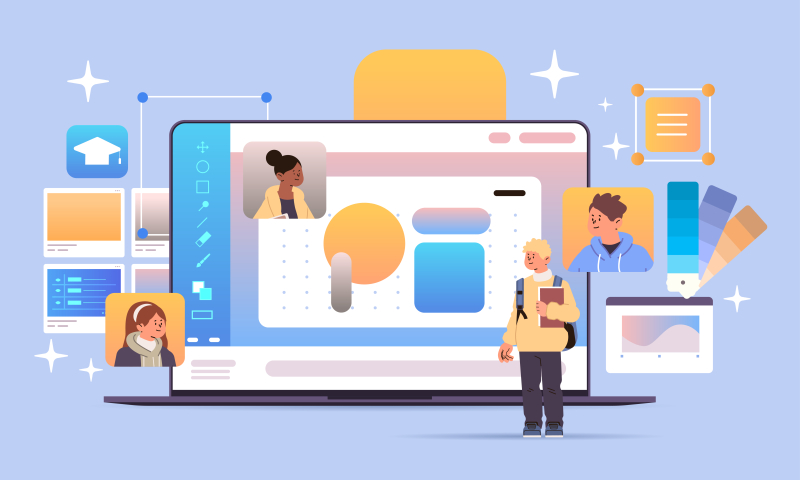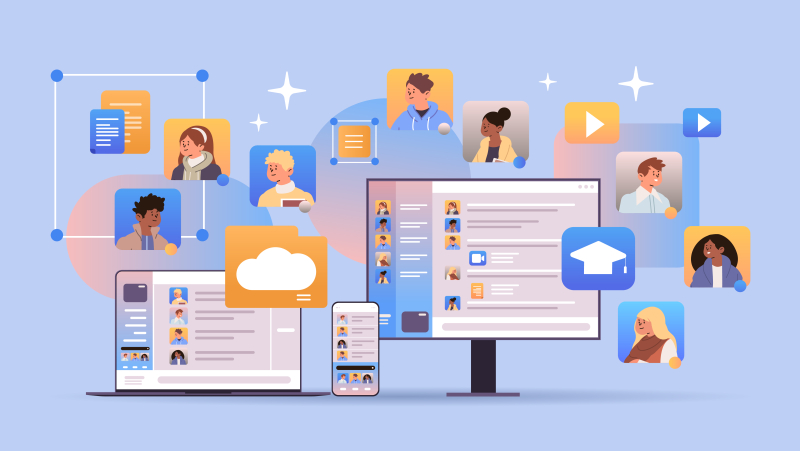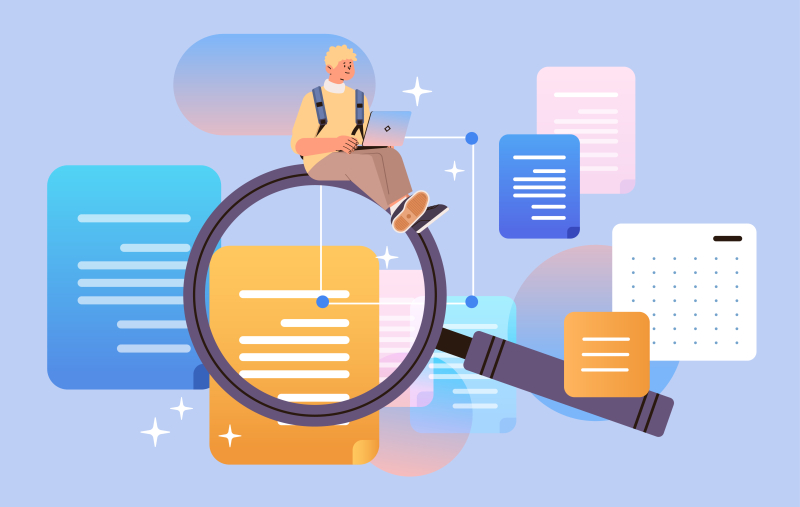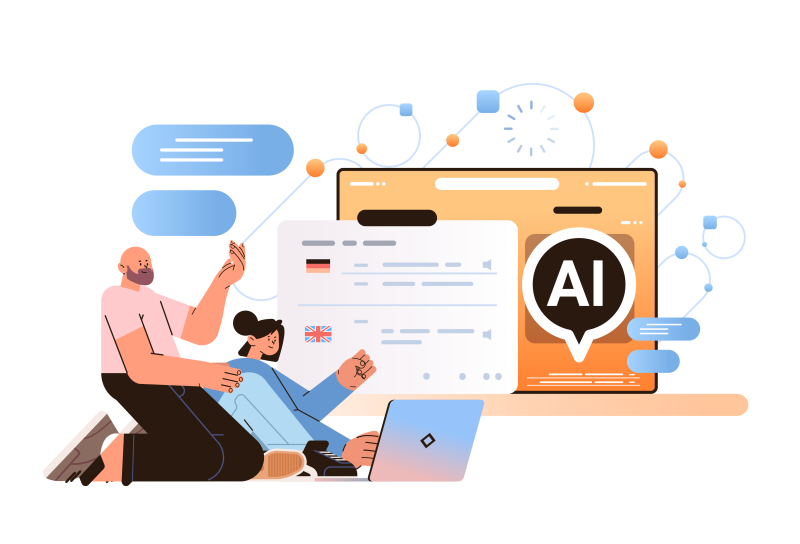Why educators need AI
Just like in other fields, in education AI makes it possible to optimize and facilitate the work of a lecturer, improving their KPI. For instance, with algorithms, it’s possible to create more assignments on a given topic or spend less time on making detailed plans for each class.
In general, AI can be used to:
- ramp up the creation of all kinds of content, such as presentations, graphs, schematics, etc.;
- alleviate the terror of the blank page;
- increase the number of cases, exercises, tests, and other tasks to be given to students, while decreasing the time needed to develop them;
- optimize audio transcription (such as recorded lectures, webinars, or even voice messages from students);
- minimize the time needed to provide feedback to students.
Using AI tools
Every AI tool has its specific features that make it suitable for particular tasks. That’s why to start working with neural networks, you should first find the services that work best in your subject field and learn to write clear prompts.
Prompts are essentially assignments to neural networks written in natural language: it’s a detailed description of the outcome you’d like to get. The clearer and more precise your prompt is, the more useful will be the output of a particular tool. Once you edit the output, it can be placed in context – in a presentation or a guidebook.
In order for the prompt to work, it’s important to:
- describe the task in detail;
- specify the object or topic;
- indicate the target audience;
- add as many details as possible. For example, if you are generating an image, describe its style and size;
- avoid using acronyms, slang, or colloquialisms;
- if you are using an English-language tool, write your prompt in English;
- make sure that your prompt doesn’t contradict itself.
Also, you shouldn’t strictly stick to recommended approaches with using algorithms: try experimenting, looking for and testing new ways of “collaborating” with them. For instance, try out different prompts and then save the more efficient ones.
In time, you will have your own pool of AI tools and your own approaches to working with them. Knowing about their drawbacks and advantages, you will be able to mindfully and efficiently use them for specific tasks.

Credit: mast3r / photogenica.ru
Apps and tools for various purposes
For generating tests. Neural networks can generate an unlimited number of tests on a given topic. Try using Google Gemini for this purpose.
For writing tasks and cases. Algorithms can also create detailed instructions with conditions for any question. For instance, you can ask a neural network to write the conditions of a physics problem, where students will have to determine velocity in space. Or a case in economics that illustrates the relation of supply and demand. This is a task for nearly any chatbot, such as ChatGPT or YandexGPT.
For gamification. Chatbots can write tasks, answer options, game rules, responses of a jury, and so on. The lecturers will only need to put the game together and edit the AI output. For this task, you can also opt for ChatGPT or YandexGPT.
For creating presentations. You can create a presentation from scratch, ask the tool to improve one you already have, or prepare one based on your lesson plan. The tool to try out here is GAMMA App.
For visual content generation. Images, diagrams, and schemes – many different tasks can be delegated to a neural network. This will help create content faster and achieve visual consistency in educational materials. There are hundreds of similar tools, but for Russian users, Kandinsky remains one of the most convenient. It is available in Russia, free for all users, and does not limit the number of images that can be created in a day.
For audio transcription. Many find it more convenient to work with text rather than audio. However, teachers often get recordings of webinars, lectures, and messages from their students in the audio format. The task of transcribing these can be delegated to a neural network. JILL WHITE AI SUMMARY, for example, is excellent for the purpose. The algorithm also summarizes the main points. By the way, a chatbot can be used to automatically generate responses for students who reach out to lecturers outside their working hours.
For text editing. Chatbots can also help diversify the formats of classes. For example, students can be asked to use them to write essays in English, prepare a speech, or create a CV. After that, they can edit the resulting content to bring it to perfection. For working with texts in English, it is convenient to use the Pi chat. However, it is important to remember the risks. Such work, if it does not involve an active editing phase and a well-developed instruction for interacting with the neural network, can turn into simply copying the text prepared by the algorithm.
For creating a detailed curriculum. This is also a task for ChatGPT. Just provide it with the necessary information and write a detailed prompt. Don’t forget to edit the algorithm’s output.

Credit: mast3r / photogenica.ru
AI vs academic integrity
However, there is also a downside. It is one thing to use AI services to ease your workload or generate new ideas, and another to present content generated by a neural network as your own. There is a high risk that students will mindlessly copy the output they receive from a neural network. At the same time, it is still wrong (and actually pointless) to prohibit the use of AI services for this reason; by banning something, you only encourage students to act against you.
To minimize risks, develop a set of rules for the use of AI. Present this "manifesto" openly to your students before the start of the course. It is also important to refine the list of rules together with the students after you’ve presented it and take their suggestions into account – this will enhance the significance of the "manifesto."
This list of rules should:
- be accepted by the entire institution (school/university), so that it’s clear for students. It’s important to involve representatives of all departments in the creation of these rules, so that they can be applied in various fields. Include details for each case;
- outline the nature of tools that are allowed. Importantly, you should also mention how students should inform lecturers that they’ve used AI in their work;
- specify that the responsibility for using AI lies with students, not the algorithm;
- describe the tools that will be used to check for plagiarism and the consequences of rule breaking.
Explain to your students that AI is a tool and assistant. It cannot replace a human – meaning that it cannot be fully relied on with various tasks. In class, shift the focus from the results to the process, pay attention to developing critical thinking skills, and see how students think and what questions they ask.

Credit: mast3r / photogenica.ru
Elena Ponomareva, a lecturer at ITMO’s Institute of International Development and Partnership, talked about implementing AI on a permanent basis during an intensive course for lecturers held at ITMO. Artem Sigaev and Oksana Nakonechnaya, lecturers at ITMO’s Foreign Language Training Center, held a workshop on which AI tools to use in class.
The annual intensive course for educators is held by ITMO’s Department of Academic Affairs. This year, it involved over 45 experts in AI and education from ITMO, other Russian universities, as well as big tech and IT. Among them were ITMO Professor Alexander Boukhanovsky, an expert in AI and cognitive technologies; Andrey Fillipovich, the head of AI Laboratory at Moscow Polytechnic University; Dmitry Botov, the head of ITMO’s educational program Artificial Intelligence; and Alexander Khvastunov, the head of development at Yandex Market. ITMO’s First Vice Rector also presented her talk on AI as a driver for ITMO’s development.





